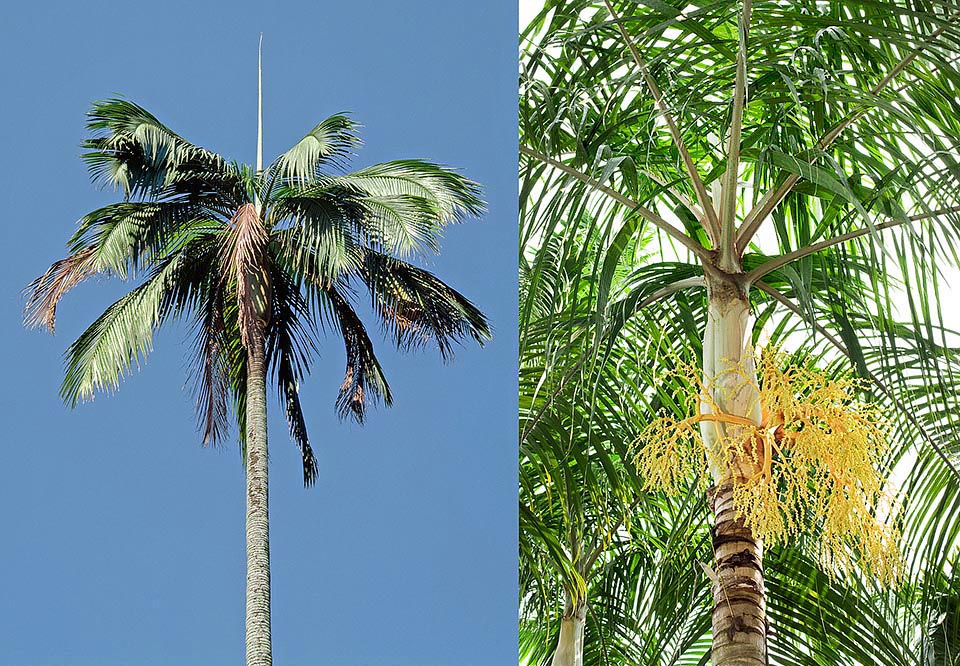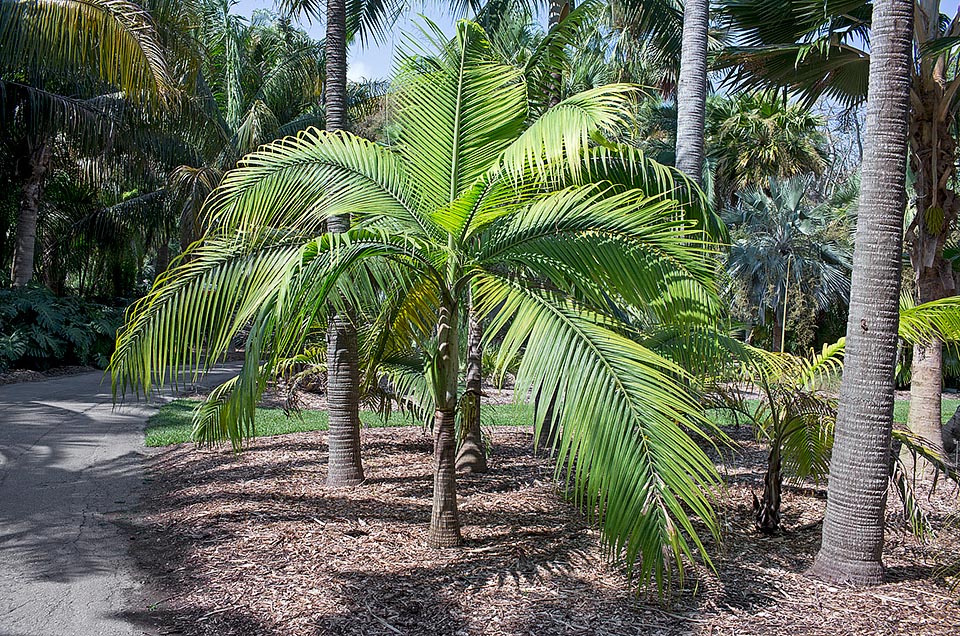Family : Arecaceae

Text © Pietro Puccio

English translation by Mario Beltramini
The Dictyosperma album (Bory) H. Wendl. & Drude ex Scheff. (1876) is native to the Mascarene Islands (Mauritius, Réunion and Rodrigues), where it is almost extinct.
The name of the genus comes from the combination of the Greek words “dictyon” = net and “sperma” = semen, with reference to the interlacement of the relieved lines present on the seed; the Latine name of the species, from “album” = white, referring to the white tomentum at times present on the foliar sheath.

Native to the Mascarene Islands, Dictyosperma album can reach 12 m in height with elegant, curved leaves 3 m long and 50 cm long inflorescences © Giuseppe Mazza
Palm with single trunk of dark grey or brown colour, about 20 cm of diameter and tall up to about 12 metres, often vertically cracked, with enlarged base. The leaves are pinnate, long about 3 metres and elegantly arched, of green colour with reddish shades in the young plants. The pointed leaflets are about 70 cm long in the median part and disposed regularly on the rachis. The foliar base, which wraps completely the trunk for a height of 1 metre forming a sort of an elegant capitol, is covered by a tomentum which can be white, greyish or brown.

Young plant. The pointed leaflets are about 70 cm long in the median part and disposed regularly on the rachis © Giuseppe Mazza
It reproduces by seed which germinates in about 2 months. Plant of remarkable ornamental value, it prefers sunny locations, regular watering and manure. Cultivable in the tropical and subtropical areas, its cultivation can be tried in a warm-temperate climate, as it resists to temperatures close to the 0°C only for short periods.
Synonyms : Areca alba Bory (1804); Linoma alba (Bory) O.F.Cook, (1917).
→ For general notions about ARECACEAE please click here.
